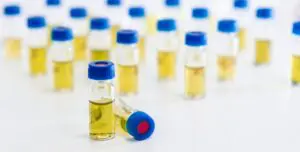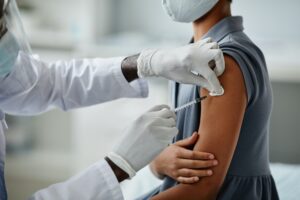

Call Us Today
(828) 505-7033
Email Us
info@advancedoccmed.com
Visit Us
1550 Hendersonville Rd Suite 200 Asheville, NC 28803
In observance of the holiday season, Advanced OccMed will be closed on the 23rd-27th and the 1st of January.

(828) 505-7033
info@advancedoccmed.com
1550 Hendersonville Rd Suite 200 Asheville, NC 28803

Tuberculosis (TB) is a highly contagious bacterial infection that primarily affects the lungs. It is a global health concern with significant morbidity and mortality rates. Early detection and diagnosis are crucial for controlling the spread of TB, preventing complications, and initiating timely treatment. One of the commonly used diagnostic methods for tuberculosis is the TB skin test (TST), also known as the Mantoux test. In this blog post, we will explore what TB skin testing is, how it detects tuberculosis infection, and the importance of this diagnostic tool in healthcare settings.
Definition and purpose of TB skin testing The TB skin test, or TST, is a diagnostic method used to determine whether a person has been infected with the bacteria that cause tuberculosis. It involves injecting a small amount of purified protein derivative (PPD) into the skin of the forearm. The test measures the body’s immune response to the injected PPD, which contains proteins from the tuberculosis bacteria.
When the PPD is injected into the skin, it triggers a localized immune response. If the person has been infected with tuberculosis, the body’s immune system recognizes the proteins in the PPD and reacts by producing a specific type of immune response. This immune response leads to the formation of a raised, red bump at the injection site, known as an induration.
The TB skin test requires two visits to a healthcare provider. During the first visit, the PPD is injected, and the person is instructed to return within 48 to 72 hours for the test to be read. The size of the induration at the injection site is measured and interpreted by the healthcare provider to determine the result.
High-risk populations TB skin testing is recommended for individuals who are at an increased risk of tuberculosis infection. This includes:
In some healthcare settings or communities with a high prevalence of TB, routine TB skin testing may be implemented as part of screening programs. This helps identify individuals with latent tuberculosis infection who may benefit from preventive treatment to reduce the risk of developing active TB in the future.
TB skin testing is a valuable diagnostic tool for detecting tuberculosis infection. By understanding what TB skin testing entails, who should get tested, how to interpret the results, and its importance in healthcare settings, we can enhance our efforts to control and prevent the spread of tuberculosis. Regular screening, early detection, and timely treatment are crucial steps in addressing this global health challenge. If you have any concerns or believe you may be at risk, consult with a healthcare provider to discuss the appropriate diagnostic approach and preventive measures.
Tuberculosis (TB) is a contagious bacterial infection caused by Mycobacterium tuberculosis. It primarily affects the lungs but can also affect other parts of the body. It spreads through the air when an infected person coughs or sneezes.
The purpose of TB skin testing is to detect whether a person has been infected with the bacteria that cause tuberculosis. It helps identify individuals with latent tuberculosis infection who are at risk of developing active TB.
TB skin testing involves injecting a small amount of purified protein derivative (PPD) into the skin. If a person has been infected with tuberculosis, their immune system reacts to the injected proteins, resulting in a raised, red bump at the injection site.
TB skin testing is recommended for individuals at an increased risk of tuberculosis infection, such as healthcare workers, close contacts of active TB cases, people living in congregate settings, immigrants from high TB prevalence countries, and those with weakened immune systems.
What does a positive TB skin test mean? A positive TB skin test indicates that a person has been infected with the tuberculosis bacteria. It does not necessarily mean that the person has active TB, and further evaluation is required to confirm the presence of active disease.
Yes, false-positive and false-negative results are possible with TB skin testing. Factors such as prior BCG vaccination, recent TB exposure, certain medical conditions, and improper test administration can contribute to inaccurate results.
TB skin testing is one of the diagnostic methods for tuberculosis. Another commonly used diagnostic method is interferon-gamma release assays (IGRAs), which are blood tests that detect the release of specific proteins by immune cells in response to TB infection.
TB skin testing is generally safe, but some individuals may experience minor side effects, such as redness, swelling, or itching at the injection site. Severe allergic reactions are rare but possible.
TB skin testing is considered safe during pregnancy. It does not pose any known risks to the fetus or the pregnant person. However, it’s always recommended to consult with a healthcare provider before undergoing any medical procedure during pregnancy.
Yes, there are preventive treatments available for individuals with latent tuberculosis infection. These treatments aim to reduce the risk of developing active TB and may include medications such as isoniazid (INH) or a combination of INH and rifapentine.




